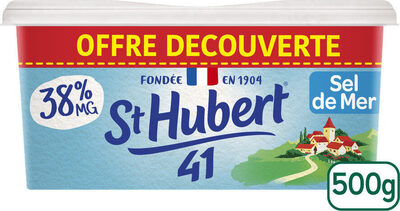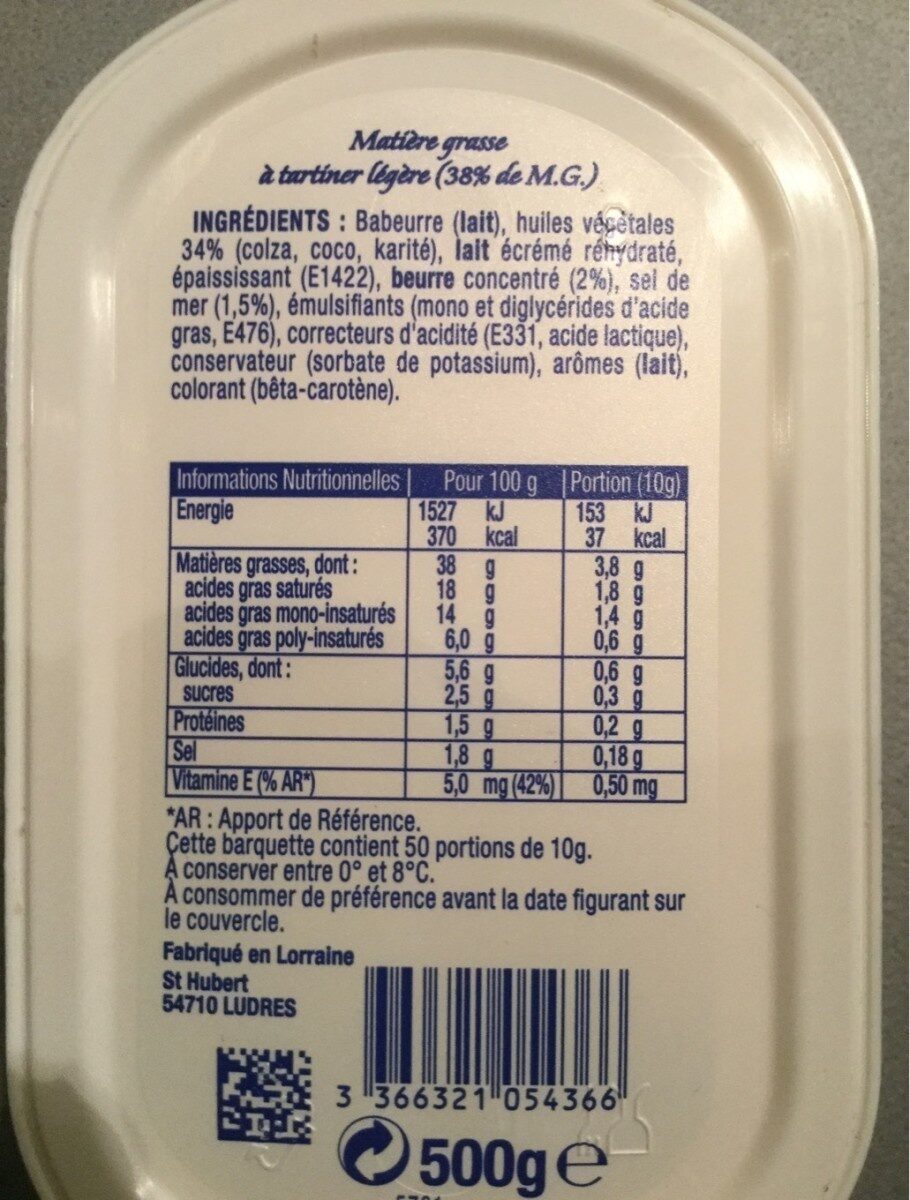St hubert 41 500 g demi sel ss hdp offre decouverte
This product page is not complete. You can help to complete it by editing it and adding more data from the photos we have, or by taking more photos using the app for Android or iPhone/iPad. Thank you!
×
Some of the data for this product has been provided directly by the manufacturer SAINT HUBERT.
Barcode: 3366321054366 (EAN / EAN-13)
Common name: Matière grasse à tartiner légère (41% MG)
Quantity: 500 g
Brands: St hubert 41, St Hubert 41 sel de mer
Categories: Tartine et cuisson
Labels, certifications, awards:
Green Dot, Made in France, No palm oil, Triman

Origin of the product and/or its ingredients: Matière grasse à tartiner légère: France
Countries where sold: France
Matching with your preferences
Environment
Packaging
Transportation
Other information
Conservation conditions: A conserver entre 0°C et 8°C.
Customer service: St Hubert, 13-15 rue du Pont des Halles 94526 Rungis
Report a problem
Data sources
The manufacturer SAINT HUBERT uses Equadis to automatically transmit data and photos for its products.
Product added on by kiliweb
Last edit of product page on by org-saint-hubert.
Product page also edited by autorotate-bot, ecoscore-impact-estimator, ethic-advisor, ethic-advisor.9b7de85a-86e5-4d12-929e-77dcb2f77bb4, openfoodfacts-contributors, packbot, roboto-app, sebleouf, spotter, yuka.Vi9FS0RLRWR1Nk0wc2RndjJ4am8xL2g1bkpDMkRVU1VCOUFKSVE9PQ, yuka.Zlk5ZEw1NGRqL2cxd2ZjL3poYms1ZGhZKzhPa1FudUxjY012SVE9PQ, yuka.sY2b0xO6T85zoF3NwEKvlhxkSMb3_wL6bjvmgxa3m4myAo33XI1_8qjnGKs.











